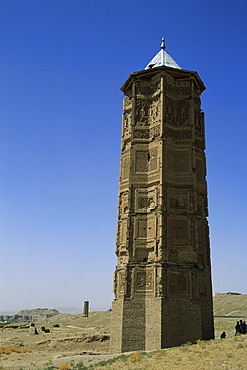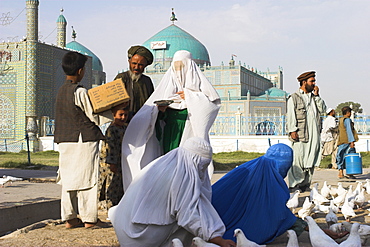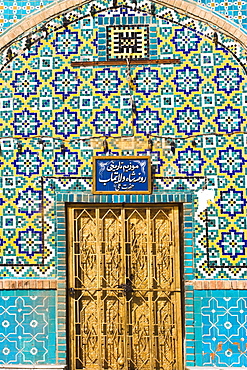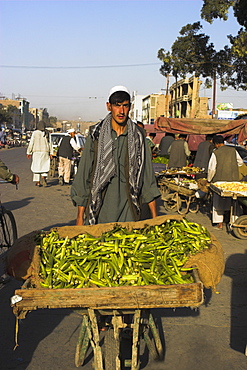Recent searches
Loading...
312-1023 - Moreno Glacier, Los Glaciares National Park, Argentina, South America
312-1098 - Little boy, Uros floating reed island, Lake Titicaca, Peru, South America
312-1114 - Transvestites at a carnival, Rio de Janeiro, Brazil, South America
312-1335 - Zulu ladies, Cape Town, South Africa, Africa
312-1369 - Zulu man, Zulu village, Zululand, South Africa, Africa
312-1497 - Cacti at sunset, Inkahuasa island, Salar de Uyuni, Bolivia, South America
312-154 - Man carrying wicker baskets full of rice through fields at Mai Chau in Vietnam, Indochina, Southeast Asia, Asia
312-1593 - Monkey skulls embedded in mud wall to protect against evil spirits, Dogon village of Telle, UNESCO World Heritage Site, Mali, Africa
312-1597 - Stone Town, Zanzibar, Tanzania, East Africa, Africa
312-1599 - Tourist with Masai people, Ngorongoro Crater, Tanzania, East Africa, Africa
312-1606 - Street scene, Addis Ababa, Ethiopia, Africa
312-1607 - Street market in a village near the airport, Gondar, Ethiopia, Africa
312-1611 - Trapezoid, Nazca Lines (Nasca Lines), UNESCO World Heritage Site, Peru, South America
312-1616 - Inca cemetery, near Nazca, Peru, South America
312-1624 - Sangoma (diviner or spirit medium), Zulu village, Zululand, South Africa, Africa
312-1625 - Zulu boy, Zulu village, Zululand, South Africa, Africa
312-1629 - A sloth bear in a tree, Venezuela, South America
312-1667 - Tourists trekking, Sulphur Lake, Kawah Ijen, Ijen Plateau, island of Java, Indonesia, Southeast Asia, Asia
312-1686 - Naga man wearing headdress made of woven cane decorated with wild boar teeth and bear fur and wearing a tiger teeth necklace, Naga New Year Festival, Lahe village, Sagaing Division, Myanmar (Burma), Asia
312-1694 - Naga man dancing and playing musical instrument, wearing headdress made of woven cane decorated with wild boar's teeth, bear fur and topped with hornbill feather, Naga New Year Festival, Lahe village, Sagaing Division, Myanmar (Burma), Asia
312-1695 - Naga lady dancing and playing, Naga New Year Festival, drum, Lahe village, Sagaing Division, Myanmar (Burma), Asia
312-1696 - Naga lady dancing and playing, Naga New Year Festival, drum, Lahe village, Sagaing Division, Myanmar (Burma), Asia
312-1704 - Naga man wearing headdress made of woven cane decorated with wild boar teeth and bear fur with Tiger claw straps and wearing tiger teeth necklace, Naga New Year Festival, Lahe village, Sagaing Division, Myanmar (Burma), Asia
312-1707 - Naga man with horn used as drinking vessel, Naga New Year Festival, Lahe village, Sagaing Division, Myanmar (Burma), Asia
312-1715 - Naga men at Grand Finale (tribal dancing) in headdresses of woven cane decorated with wild boar teeth and bear fur topped with a hornbill feather, with tiger claw straps, wearing tiger teeth necklaces, heirloom ivory armbands and aprons decoratated with cowrie shells, Lahe village, Naga New Year Festival, Sagaing Division, Myanmar (Burma), Asia
312-1736 - The Naga (Macham tribe) chief of the village wearing traditional hat made of woven cane decorated with wild boars teeth and bear fur, also bead necklace with tiger teeth, Magyan Village, Sagaing Division, Myanmar (Burma), Asia
312-1739 - Naga (Macham tribe) ladies outside house, the lady in the foreground has face and leg tattoos, done in childhood so that they are not attractive to men who might steal them from the village, Magyan Village, Sagaing Division, Myanmar (Burma), Asia
312-1744 - Naga (Macham tribe) lady with face tattoos, done during childhood so that they are not attractive to men who might steal them from their village, Magyan Village, Sagaing Division, Myanmar (Burma), Asia
312-1745 - Naga (Macham tribe) girl with face tattoos, done when they are children so that they are not attractive to men who might steal them from their village) carrying wood on her back, Magyan Village, Sagaing Division, Myanmar (Burma), Asia
312-1746 - Naga New Year Festival, Naga people walking to festival ground, the men wearing headdress made of woven cane decorated with wildboar teeth, bear fur and topped with hornbill feather also with conch shell ear ornaments, Lahe village, Sagaing Division, Myanmar (Burma), Asia
312-1749 - Naga tribal groups lined up waiting for the arrival of the General, (the shorts are not part of their traditional clothes but supplied by the govenment, for them to wear in place of their traditional loin cloth), wearing headdresses made of woven cane decorated with wildboar teeth, bear fur and topped with hornbill feather, with tiger jaw necklaces, Naga New Year Festival, Lahe village, Sagaing Division, Myanmar (Burma), Asia
312-1755 - Naga man, Taungkul tribe wearing traditional headdress made with red seeds, from Sombra village near the Indian border, who walked for five days to get to the Naga New Year Festival, Lahe village, Sagaing Division, Myanmar (Burma), Asia
312-1762 - Naga man wearing headdress made of woven cane decorated with wild boar teeth, Mithan horns (wild cow) and bear fur and wearing conch shell ear ornament with a tiger claw, Naga New Year Festival, Lahe village, Sagaing Division, Myanmar (Burma), Asia
312-177 - Portrait of a smiling boy riding on a water buffalo in water in Vietnam, Indochina, Southeast Asia, Asia
312-1787 - Wan Sai village (Aku tribe) Aku lady with baby, Kengtung (Kyaing Tong), Shan State, Myanmar (Burma), Asia
312-1813 - Glazed tiles depicting the Jataka stories, Mingalazedi (blessing stupa) built in 1277 by Narathipati, old Bagan (Pagan), Myanmar (Burma), Asia
312-1826 - Wan Sai village (Aku tribe) Aku baby girl, Kengtung (Kyaing Tong), Shan State, Myanmar (Burma), Asia
312-1829 - Nun Lin Kong village (Akha Tribe), Akha lady, Kengtung (Kyaing Tong), Shan State, Myanmar (Burma), Asia
312-1902 - Buildings on the banks of the Kabul River, central Kabul, Kabul, Afghanistan, Asia
312-1904 - Pollution in the Kabul River, Kabul, Afghanistan, Asia
312-1908 - One of the crater lakes at Band-E-Amir (Dam of the King), Afghanistan's first National Park set up in 1973 to protect the five lakes, believed by locals to have been created by the Prophet Mohammed's son-in-law Ali, making them a place of pilgrimage, Afghanistan, Asia
312-1910 - Band-i-Zulfiqar, the main lake at Band-E-Amir (Dam of the King), Afghanistan's first National Park set up in 1973 to protect the five lakes, believed by locals to have been created by the Prophet Mohammed's son-in-law Ali, making them a place of pilgrimage, Afghanistan, Asia
312-1915 - Ghorid (12th century) ruins, believed to be a Mausoleum or Madrassa, Chist-I-Sharif, Afghanistan, Asia
312-1916 - Gaur Shad 's Mausoleum, part of the Mousallah Complex, Herat, Afghanistan, Asia
312-1929 - Tomb of the poet Jami, greatest of the 15th century poets, Herat, Afghanistan, Asia
312-1933 - Children of the semi-nomadic Aimaq people in front of summer yurts, Pal-Kotal-i-Guk, between Chakhcharan and Djam, Afghanistan, Asia
312-1940 - The 65 metre tall Minaret of Jam, built by Sultan Ghiyat Ud-Din Muhammad ben San, in around 1190, with Kufic script and verses of the Koran on the exterior, UNESCO World Heritage Site, Ghor Province, Afghanistan, Asia
312-1942 - Doorway at the shrine of Khwaja Abdulla Ansari, Sufi poet and philosopher born in Herat in 1006, Gazar Gah, Herat, Afghanistan, Asia
312-1943 - Friday Mosque (Masjet-eJam), restored since 1943, originally laid out in the year 1200 by the Ghorid Sultan Ghiyasyddin on the site of an earlier 10th century mosque, Herat, Afghanistan, Asia
312-1945 - The minaret of Bahram Shah, one of two minarets built by Sultan Mas'ud III and Bahram Shah with square Kufic and Noshki script, that served as models for the minaret of Jam, and believed to have originally been part of mosques, Ghazni, Afghanistan, Asia
312-1946 - The minaret of Sultan Mas'ud III, one of two minarets built by Sultan Mas'ud III and Bahram Shah with square Kufic and Noshki script, that served as models for the minaret of Jam, and believed to have originally been part of mosques, Ghazni, Afghanistan, Asia
312-1957 - Tourist climbing into the minaret by a window, 12th Century Minaret of Jam, UNESCO World Heritage Site, Ghor (Ghur) (Ghowr) Province, Afghanistan, Asia
312-1961 - The Friday Mosque or Masjet-eJam, built in the year 1200 by the Ghorid Sultan Ghiyasyddin on the site of an earlier 10th century mosque, Herat, Herat Province, Afghanistan, Asia
312-1963 - Twelfth century Ghorid ruins believed to be a mausoleum or madrassa, Jam to Obay, Chist-I-Sharif, Ghor (Ghur) (Ghowr) province, Afghanistan, Asia
312-1988 - Timurid decoration, main Iwan of the interior courtyard, Sufi shrine of Gazargah, Herat, Herat Province, Afghanistan, Asia
312-1994 - Ribbed dome of the mausoleum of Gaur Shad, wife of the Timurid ruler Shah Rukh, son of Tamerlane, The Mousallah Complex, Herat, Herat Province, Afghanistan, Asia
312-1999 - Detail of tilework on the Friday Mosque or Masjet-eJam, built in the year 1200 by the Ghorid Sultan Ghiyasyddin on the site of an earlier 10th century mosque, Herat, Herat Province, Afghanistan, Asia
312-2003 - Tilework and mortar hole on minaret beside Gaur Sahd's mausoleum, The Mousallah Complex, Herat, Herat Province, Afghanistan, Asia
312-2011 - Pilgrims in front of tomb of the 11th century Sufi poet Abdullah Ansari, courtyard, Sufi shrine of Gazargah, Herat, Herat Province, Afghanistan, Asia
312-2014 - Timurid tilework on tower of the Citadel (Qala-i-Ikhtiyar-ud-din), originally built by Alexander the Great, but in its present form by Malik Fakhruddin in 1305AD, Herat, Herat Province, Afghanistan, Asia
312-2015 - The mihrab in the Friday Mosque or Masjet-eJam, built in the year 1200 by the Ghorid Sultan Ghiyasyddin on the site of an earlier 10th century mosque, Herat, Herat Province, Afghanistan, Asia
312-2025 - The mihrab in the Friday Mosque or Masjet-eJam, built in the year 1200 by the Ghorid Sultan Ghiyasyddin on the site of an earlier 10th century mosque, Herat, Herat Province, Afghanistan, Asia
312-2029 - Timurid tilework on a tower of The Citadel (Qala-i-Ikhtiyar-ud-din), originally built by Alexander the Great, but in its present form by Malik Fakhruddin in 1305AD, Herat, Herat Province, Afghanistan, Asia
312-2030 - Courtyard of the Friday Mosque or Masjet-eJam, built in the year 1200 by the Ghorid Sultan Ghiyasyddin on the site of an earlier 10th century mosque, Herat, Herat Province, Afghanistan, Asia
312-2032 - Pul-I-Malan, an ancient bridge of 15 arches now reconstructed, Herat, Herat Province, Afghanistan, Asia
312-2060 - Band-I-Zulfiqar the main lake, Band-E- Amir (Bandi-Amir) (Dam of the King) crater lakes, Afghanistan's first National Park, Bamian province, Afghanistan, Asia
312-2066 - Shrine of Hazrat Ali, who was assassinated in 661, Mazar-I-Sharif, Balkh province, Afghanistan, Asia
312-2071 - Pilgrims at the shrine of Hazrat Ali, who was assassinated in 661, Mazar-I-Sharif, Balkh province, Afghanistan, Asia
312-2083 - Memorial plaque of assassinated Mujahadin leader Ahmad Shah Massoud know as the ' Lion of Panshir' an Afghan National Hero, situated opposite the Shrine of Hazrat Ali, Mazar-I-Sharif, Balkh province, Afghanistan, Asia
312-2087 - The famous white pigeons, Shrine of Hazrat Ali, Mazar-I-Sharif, Balkh province, Afghanistan, Asia
312-2093 - Family feeding the famous white pigeons, Shrine of Hazrat Ali, Mazar-I-Sharif, Balkh province, Afghanistan, Asia
312-2094 - Tiling round door, Shrine of Hazrat Ali, who was assissinated in 661, Mazar-I-Sharif, Balkh province, Afghanistan, Asia
312-2097 - Tilework detail, Shrine of Hazrat Ali, who was assassinated in 661, Mazar-I-Sharif, Balkh province, Afghanistan, Asia
312-2117 - Men pulling wooden cart piled high with red water containers along road, Mazar-I-Sharif, Balkh province, Afghanistan, Asia
312-2119 - Unique Timurid corkscrew pillars of the Shrine of Khwaja Abu Nasr Parsa, Balkh (Mother of Cities), Balkh province, Afghanistan, Asia
312-2163 - Detail of decoration on minaret including Kufic inscription in turquoise glazed tiles, 12th century Minaret of Jam, UNESCO World Heritage Site, Ghor (Ghur, Ghowr) Province, Afghanistan, Asia
312-2169 - Detail of decoration on minaret including Kufic inscription in turquoise glazed tiles, 12th century Minaret of Jam, UNESCO World Heritage Site, Ghor (Ghur, Ghowr) Province, Afghanistan, Asia
312-2171 - Timurid decoration, main Iwan of the interior courtyard, Sufi shrine of Gazargah, Herat, Herat Province, Afghanistan, Asia
312-2177 - Detail of decoration on minaret dating from 12th century, including Kufic inscription in turquoise glazed tiles, Minaret of Jam, UNESCO World Heritage Site, Ghor (Ghur, Ghowr) Province, Afghanistan, Asia
312-2201 - Buddhist stupa carved out of rock at Takht-I-Rustam (Rustam's throne) an early burial mound that contained relics of the Buddha, part of a stupa-monastery complex dating from the Kushano-Sasanian period 4th-5th century AD, near Haibak,Samangan Province, Afghanistan, Asia
312-2202 - Corridor off which monks' living quarters were carved in cave 2, Takht-I-Rusam (Rustam's throne), part of a Buddhist stupa-monastery complex dating from the Kushano-Sasanian period 4th-5th century AD, Samangan Province, Afghanistan, Asia
312-2207 - Hari Rud river flows through fertile valley at base of red rock mountains, between Jam and Chist-I-Sharif, Ghor (Ghowr province), Afghanistan, Asia
312-2209 - Hajigak Pass, 12140ft (3700m), between Kabul and Bamiyan (southern route), Afghanistan, Asia
312-2210 - Tourist and locals at the Magenta cliffs near Shahr-e-Zohak (Red City), between Kabul and Bamiyan (the southern route), Bamiyan province, Afghanistan, Asia
312-2248 - City centre and walls of Bala Hissar, citadel or fortress dating back to the 5th century AD, Kabul, Afghanistan, Asia
312-2249 - Man selling rugs on banks of Kabul river, Central Kabul, Afghanistan, Asia
312-2256 - Man looking at Minaret of Bahram Shah one of two early 12th century minarets, Ghazni, Afghanistan, Asia
312-2259 - Street scene alongside the Kabul river, Central Kabul, Afghanistan, Asia
312-2263 - Street market, Central Kabul, Afghanistan, Asia
312-2271 - Empty niche in the cliff where one of the famous carved Buddhas once stood, destroyed by the Taliban in 2001, Bamiyan, UNESCO World Heritage Site, Bamiyan province, Afghanistan, Asia
312-2274 - The Friday Mosque (Masjet-e Jam), Herat, Afghanistan, Asia
312-2279 - Detail of the Friday Mosque (Masjet-e Jam), Herat, Afghanistan, Asia
312-2294 - Youqson Kyaung (Yoke-Sone Kyaung) the oldest surviving wooden monastery in the Bagan area, now a museum containing articles from the Konbaung period, Salay (Sale), Myanmar (Burma), Asia
312-2298 - Kuchie nomad camel train, between Chakhcharan and Jam, Afghanistan, Asia
312-2301 - Aimaq lady and children, Aimaq nomad camp, Pal-Kotal-i-Guk, between Chakhcharan and Jam, Afghanistan, Asia
312-2305 - Aimaq children, Aimaq nomad camp, Pal-Kotal-i-Guk, between Chakhcharan and Jam, Afghanistan, Asia



































































































